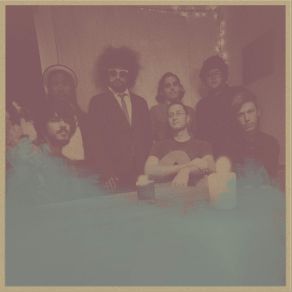Psychic Temple
Download links and information about Psychic Temple by Chris Schlarb. This album was released in 2010 and it belongs to Jazz, Rock, Indie Rock, Alternative genres. It contains 4 tracks with total duration of 33:16 minutes.

|
|
|---|---|
| Artist: | Chris Schlarb |
| Release date: | 2010 |
| Genre: | Jazz, Rock, Indie Rock, Alternative |
| Tracks: | 4 |
| Duration: | 33:16 |
| Buy it NOW at: | |
| Buy on iTunes $7.99 | |
Tracks
[Edit]| No. | Title | Length |
|---|---|---|
| 1. | I Can Live Forever If I Slowly Die | 10:12 |
| 2. | Dream State > Police State | 9:17 |
| 3. | Daughters of Ursa Major | 5:22 |
| 4. | White Dove In the Psychic Temple | 8:25 |
Details
[Edit]With 2010's Psychic Temple, Long Beach composer/producer/arranger/multi-instrumentalist Chris Schlarb assembled over 25 musicians and vocalists and guided them to co-create his long-form pieces, drawing equally from his background in jazz improvisation and a more experimental muse. Schlarb cited Bill Laswell's always morphing Material project as a direct influence, inspired by Laswell's juxtaposition of somewhat mismatched players and the more interesting results that sprang from those strange pairings. With Psychic Temple II, Schlarb revisits his role of composer as creative director, again conducting a large pool of talent, but this time gravitating a lot closer to pop music than the first, more elongated Psychic Temple volume. Beginning with smoky chord progressions and vocalist Sarah Negahdari's throaty warble, album opener "Seventh House" sets the tone with wandering, jazz-influenced songwriting. This song and its instrumental afterthought "The Starry King Hears Laughter" both have the same dark, nocturnal quality of California pop stars who had periods moonlighting as jazz aficionados, be it Steely Dan's pristine meandering on Aja or Joni Mitchell's heartsick crooning on The Hissing of Summer Lawns. This jazz-informed pop sometimes takes on a post-rock feel, as on the Sea and Cakey "Solo in Place." It's on the album's several covers (including Schlarb's takes on tunes by Joe Jackson, Frank Zappa, and Brian Wilson) that the distinct melding of improvisational and pop-friendly languages is heard most strikingly. In particular, the final strains of Schlarb's mellow yet desperate reading of later Beach Boys tune "'Til I Die" sound more helpless and scarred than the already shaky original. A chorus of distinct voices from indie stars Sufjan Stevens, Nedelle Torrisi, and the Castanets' Raymond Raposa slowly drowns under waves of stringed instruments and increasingly dissonant walls of overdubbed violin drones. Only the ten-minute "NO TSURAI" comes close to the longer explorations of the first Psychic Temple, and amidst the catchier melodic fare, its droning brass and subdued long tones offer something of a breather from the rest of the record. Keeping a reserved pace even when at its most pop, Psychic Temple II is a highly consistent listen given how surprising some of its sounds are and how jarring some of its juxtaposed elements could be. Skillfully conducting, Schlarb refines the vision of the predecessor into something tightly wound but loosely presented.